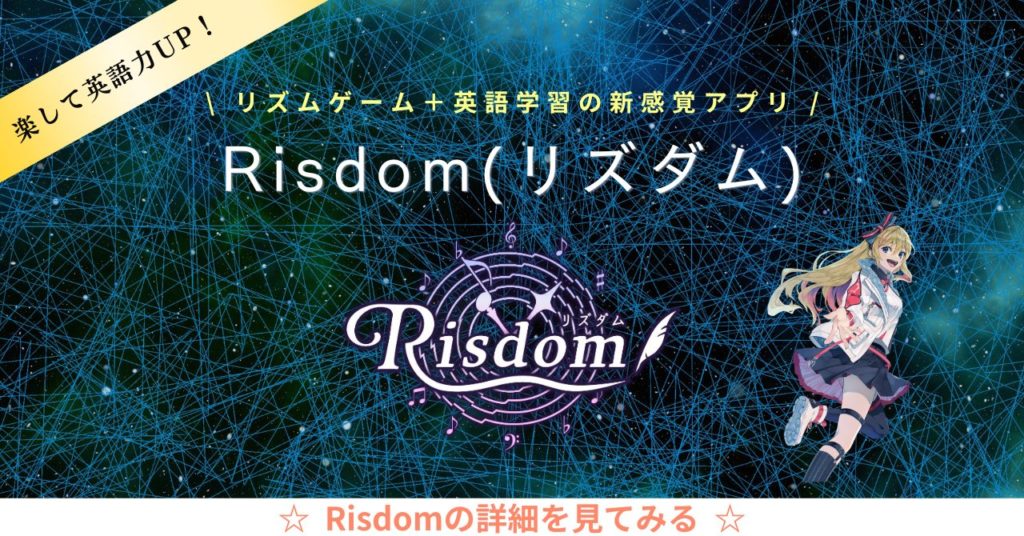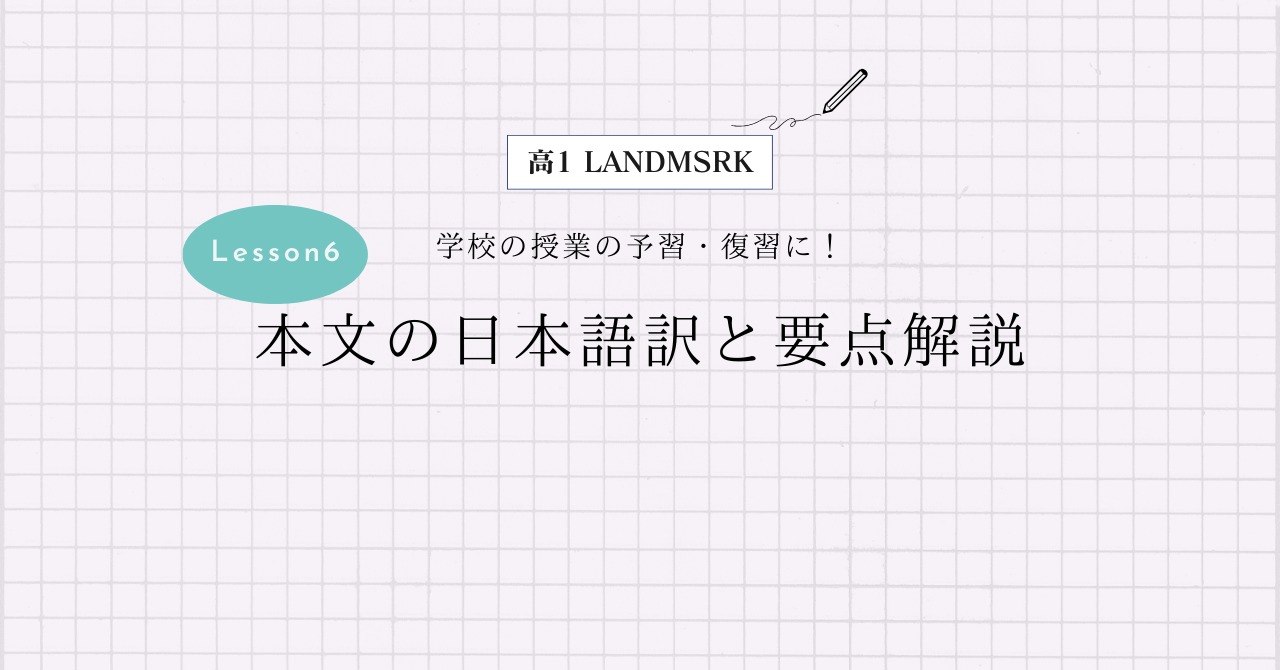啓林館 高1LANDMARK Lesson6 Part3の本文の日本語訳と重要箇所の解説です。
Lesson6-1, 6-2, 6-4の解説はこちらからご覧ください。
>高1LANDMARK Lesson6 Part1 本文和訳
>高1LANDMARK Lesson6 Part2 本文和訳
>高1LANDMARK Lesson6 Part4 本文和訳
- LANDMARK Lesson6 Part3 本文と日本語訳
- LANDMARK Lesson6 Part3 重要事項の解説
- Different cultures have ditterent types of non-verbal communication.
- Take greetings for example.
- We bow when we greet each other in Japan, while many other Asian countries people press the palms of their hands together to greet people.
- This gesture spread through the introduction of Buddhism from India.
- In Western countries throughout Europe and America, however, it is common to shake hands or hug when you meet someone.
- There are also some unique greetings in the world.
- Maori people in New Zealand, for example, press their noses together when they greet.
- This is to show they share the breath of life.
- In Tibet, people greet each other by sticking their tongues out because it is regarded as a gesture of respect.
- Another example is that of the Kikuyu people in Africa.
- They greet each other by spitting on the other’s hand to take away evil and bring good luck.
- LANDMARK Lesson6 Part3 まとめ
LANDMARK Lesson6 Part3 本文と日本語訳
Q1. How did the Asian greeting gesture spread?
「アジアの挨拶のジェスチャーはどのようにして広がりましたか?」
Q2. How do Maori people in New Zealand greet?
「ニュージーランドのマオリの人々はどのように挨拶しますか?」
Different cultures have ditterent types of non-verbal communication.
「様々な文化には様々な種類の非言語的コミュニケーションがあります。」
Take greetings for example.
「例えば挨拶です。」
We bow when we greet each other in Japan, while many other Asian countries people press the palms of their hands together to greet people.
「日本ではお互いに挨拶をするとき会釈をし,一方で多くの他のアジアの国の人々は,挨拶するために自分の手の平を合わせます。」
This gesture spread through the introduction of Buddhism from India.
「このジェスチャーはインドの仏教の導入によって広まりました。」
In Western countries throughout Europe and America, however, it is common to shake hands or hug when you meet someone.
「しかし,ヨーロッパとアメリカにある西洋の国では,誰かと会ったときは握手をするかハグすることが一般的です。」
There are also some unique greetings in the world.
「世界にはいくつか独特な挨拶もあります。」
Maori people in New Zealand, for example, press their noses together when they greet.
「例えば,ニュージーランドのマオリの人々は挨拶をするときに鼻を押し付け合います。」
This is to show they share the breath of life.
「これは,彼らが生命を共有していることを示します。」
In Tibet, people greet each other by sticking their tongues out because it is regarded as a gesture of respect.
「チベットでは,お互いに舌を出すことで挨拶をします。なぜならそれが敬意を表するジェスチャーとして見なされるからです。」
Another example is that of the Kikuyu people in Africa.
「他の例はアフリカのキクユ族の挨拶です。」
They greet each other by spitting on the other’s hand to take away evil and bring good luck.
「彼らは邪気を払い,幸運をもたらすためにお互いに相手の手に唾を吐くことで挨拶をします。」

LANDMARK Lesson6 Part3 重要事項の解説
Different cultures have ditterent types of non-verbal communication.
“different”は「様々な,異なった」という形容詞で,“culture”は「文化」,“type”は「種類,タイプ」という名詞です。
“non-verbal”は「非言語」という意味で,“communication”は「コミュニケーション,意志疎通」という名詞です。
Take greetings for example.
“for example”は「例えば」という重要表現ですね。
“take greetings”は「挨拶をする」という意味になります。
We bow when we greet each other in Japan, while many other Asian countries people press the palms of their hands together to greet people.
この文では「接続詞when」と「接続詞while」が使われていますね。
“while”は「~の間,一方で」という意味で,今回は「一方で」の意味です。
“bow”は「頭を下げる,会釈する」という動詞で,発音は「バウ」なので要注意です!
“greet”は「に挨拶をする,出迎える」という動詞で,“each other”は「お互い」という重要表現ですね。
“other”は「他の」という形容詞で,“press ~ together”は「を合わせる」という意味になります。“palm”は「手の平」という名詞です。
“to greet”は「不定詞の副詞的用法」ですね。
This gesture spread through the introduction of Buddhism from India.
“gesture”は「ジェスチャー,身振り」という名詞になります。
“spread”は「広まる」という動詞で,過去形も過去分詞も同じ形です。
“through”は「~を通して」という前置詞で,“introduction”は「紹介,導入」,“Buddhism”は「仏教」という名詞になります。
“of”は前置詞で,”A of B”の形で「BのA」というように後ろから前に訳します。
In Western countries throughout Europe and America, however, it is common to shake hands or hug when you meet someone.
“however”は「しかし」という意味の副詞になります。
同じ意味で“but”がありますが,こちらは接続詞なので品詞が異なります。“but”は“文A,but 文B”というように,2つの文を繋ぐ際に使います。
“文A. But 文B.”というように,“but”を文の先頭に置いて1文だけで完結させるのは原則NGとなります。
“western”は「西洋の」という形容詞で,“throughout”は「~中に」という前置詞です。
“it”は“to”以下の内容を指していて,“common”は「一般的な,共通の」という形容詞ですね。
“shake”は「を振る」という動詞ですが,“shake hands”で「握手する」という重要表現です。
“hug”は「ハグする,を抱きしめる」という動詞で,“someone”は「誰か」という代名詞になります。
また,この文では「接続詞when」も使われていますね。
There are also some unique greetings in the world.
この文は「there構文」になっていますね。
“also”は「また,さらに」といった副詞で,付け加える役割があります。色々な文で使うので必ず覚えましょう!
“some”は「いくつかの」,“unique”は「独特な,珍しい」という形容詞になります。
Maori people in New Zealand, for example, press their noses together when they greet.
“press ~ together”は「を合わせる」という意味でしたね。“nose”は「鼻」という名詞です。
また,この文では「接続詞when」も使われていますね。
“they”と“their”は“Maori people in New Zealand”を指しています。
This is to show they share the breath of life.
“show”は「を示す,見せる」という動詞で,後ろには「接続詞that」が省略されていますね。
“they”は“Maori people in New Zealand”を指しています。
“share”は「を共有する」という動詞で,“breath”は「息」,“life”は「生命,生活」という名詞です。
“the breath of life”で「必要不可欠なもの」という表現になりますが,今回は「生命」としました。
また,“to show”は「不定詞の名詞的用法」ですね。
In Tibet, people greet each other by sticking their tongues out because it is regarded as a gesture of respect.
“by”は「~によって」という「手段・方法」を表す前置詞です。他にも色々な意味があるので簡単にまとめておきます。
1.受動態とセットで「~によって」
2.”by+乗り物”で「交通手段」
3.「~までに」という期限
4.「~のそばに」という場所を表す
“stick ~ out”は「を突き出す」といった意味で,“tongue”は「舌」という名詞です。
また,この文では「接続詞because」が使われていますね。
“regard A as B”は「AをBと見なす」という重要表現で,“it”は“sticking their tongues out”を指していて,“respect”は「尊敬,敬意」という名詞になります。
Another example is that of the Kikuyu people in Africa.
“another”は「他の」という形容詞で,“example”は「例」という名詞になります。
“that”は“greeting”の代わりとして使われていますね。
“Kikuyu”は「キクユ族」というケニアに住む民族になります。
They greet each other by spitting on the other’s hand to take away evil and bring good luck.
“They”は“the Kikuyu people in Africa”を指しています。
“spit on~”は「~に唾を吐く」という意味で,“other”は「他人」という名詞になります。
名詞に‘sを付けると「~の」という所有を表します。
直前の名詞が複数形のときは” teachers‘ “のようにアポストロフィーだけを最後に付けます。
“take away~”は「~を取り除く」,“bring”は「を持ってくる,もたらす」という動詞ですね。
“evil”は「悪,邪気」,“luck”は「運」という名詞になります。
“take away”と“bring”はどちらも“to”と繋がっていて,「不定詞の副詞的用法」になっています。
LANDMARK Lesson6 Part3 まとめ
以上がLANDMARK Lesson6 Part3の日本語訳となります。
「不定詞」「接続詞」などの使い方をしっかり確認しておきましょう!
>高1LANDMARK Lesson6 Part1 本文和訳
>高1LANDMARK Lesson6 Part2 本文和訳
>高1LANDMARK Lesson6 Part4 本文和訳
何か分からない点や他に解説してほしい点があれば,お気軽にコメントしてください!



コメント